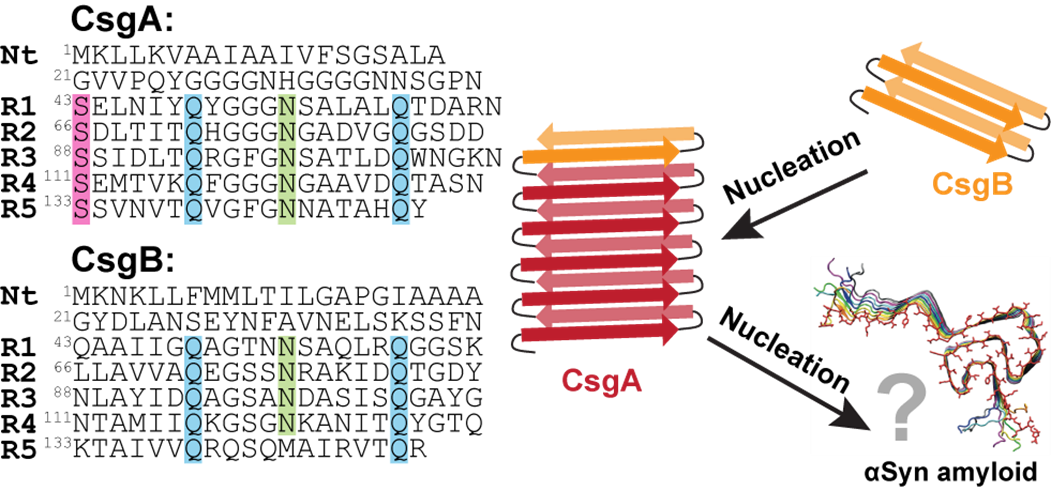Research
Our research develops and applies solid-state Nuclear Magnetic Resonance (ssNMR) to study the architecture and dynamics of bacterial biofilm in situ. SsNMR spectroscopy is an atomic-level method to determine the chemical structure, three-dimensional structure and dynamic behaviour of solids and semi-solids. By integrating chemistry, physics and biology, we aim to understand the composition and weak spots of bacterial biofilm, and offer strategies to eradicate recalcitrate infections associated with them.
Project #1: Investigating the Chemistry, Structure and Dynamics of Exopolysaccharides in E. coli Biofilms
|
Figure 1. The pEtN modification of cellulose is essential for biofilm formation, however the distribution and structure of the modified cellulose is largely unknown. |
Escherichia coli is a model Gram-negative bacterium and is mostly benign to its host. However, certain strains of E. coli form biofilms that cause recurrent urinary tract infections, medical device-related infections, and many intestinal disorders. Cellulose is the major exopolysaccharide of E. coli and Salmonella biofilm. Recent ssNMR studies revealed that biofilm cellulose is heavily modified by phosphoethanolamine (pEtN). Removal of cellulose or of pEtN modifications of cellulose compromise the integrity of the biofilm. Elucidating the structure and assembly of cellulose in biofilms is key to biomaterial modification strategies and biofilm-targeting antibiotics. We apply multidimensional ssNMR to investigate the molecular structure of cellulose, its interaction with Curli (a functional amyloid in E. coli biofilms), and additional dynamic exopolysaccharides in the biofilm. |
Project #2: Elucidating the Structure of Functional Amyloids in Biofilms and Exploring its Cross-Seeding with Pathological Amyloids
|
Figure 2. CsgB nucleates CsgA amyloid formation in vivo and in vitro, while Curli formation is associated with the formation of α-Synuclein amyloid, although the cross-seeding/initiation mechanism has not been understood. |
|
|
Functional amyloids serve a wide array of biological roles. Curli, extracellular fibers secreted by many enteric bacteria, including E. coli and Salmonella, are among the first identified functional amyloids. Curli fibrils primarily consist of the fibril-forming major subunit CsgA, whose polymerization is finely controlled by the Curli biogenesis system. Recent findings suggest cross-seeding between Curli and neurodegenerative amyloids in animal models, which urges in-depth exploration of Curli fibril’s molecular structure, fibrilization mechanism, and its potential implications in neurodegenerative diseases. We aim to employ a multidisciplinary approach to investigate the molecular structure, nucleation mechanism, and cross-seeding activities of curli amyloids.
|
Project #3: Probing the Biofilm Adaption During Pseudomonas fluorescens Rapid Evolution
In evolutionary biology, adaptive radiation is a process in which organisms diversify rapidly from an ancestral species when new resources or environmental niches are made available. Common bacterium Pseudomonas fluorescens evolves rapidly under novel environmental conditions, generating diverse mutants. Identical populations reproducibly diversify into distinct morphologies when provided with ecological opportunity, and the newly evolved niche-specialists preserve these variations. We aim to uncover the molecular signature behind the difference that underlie these biofilm morphological variations.

